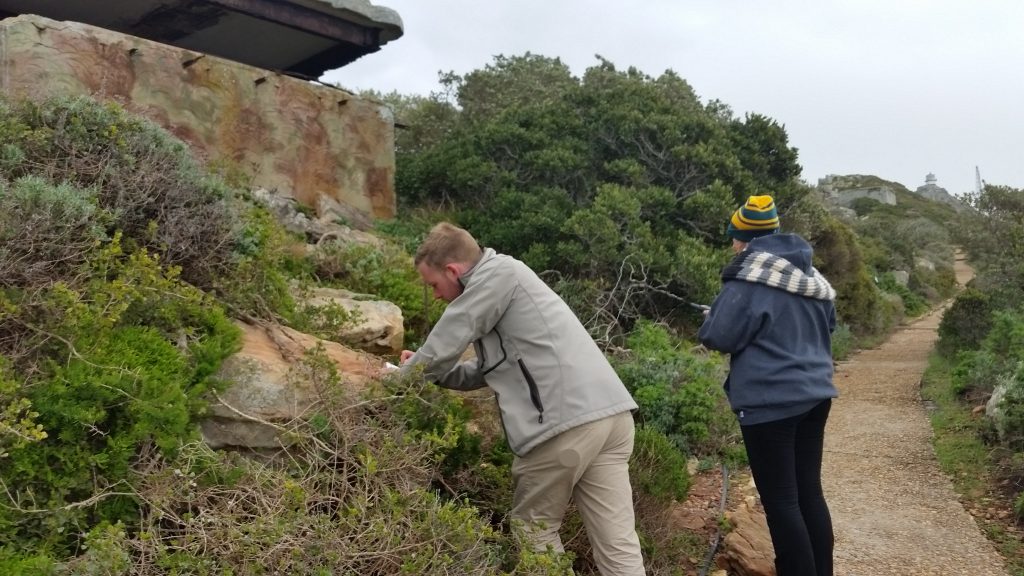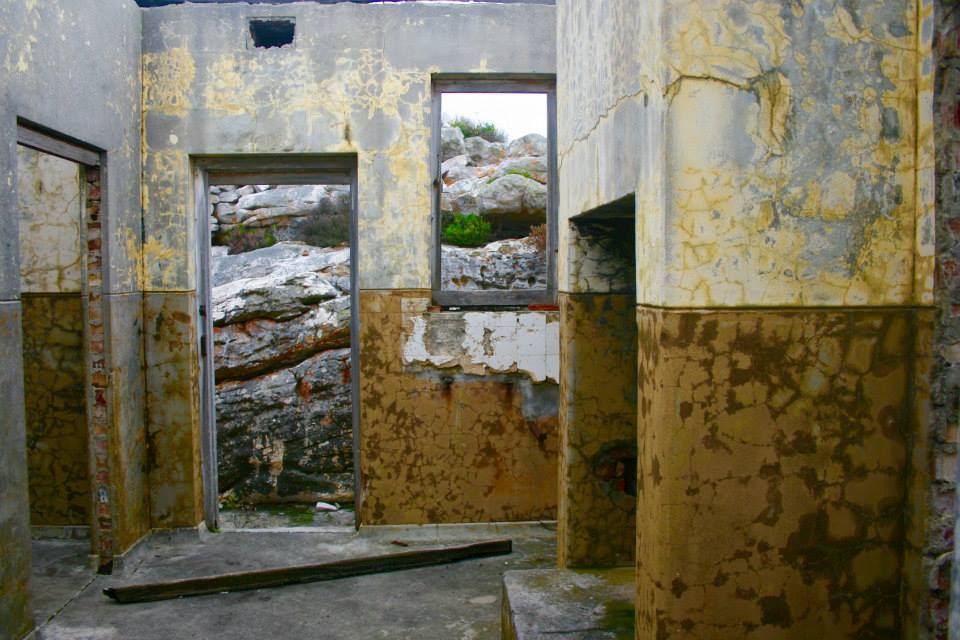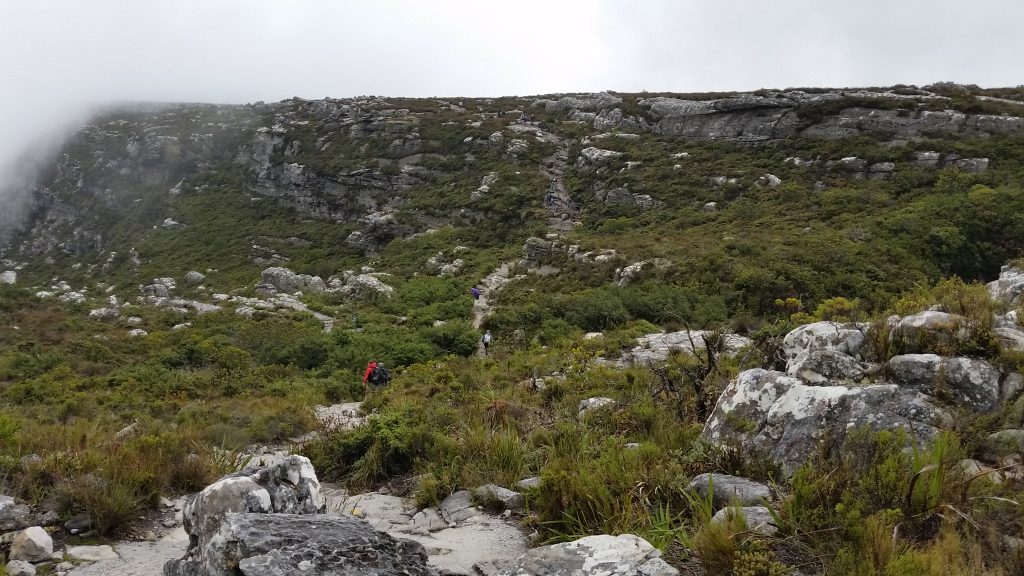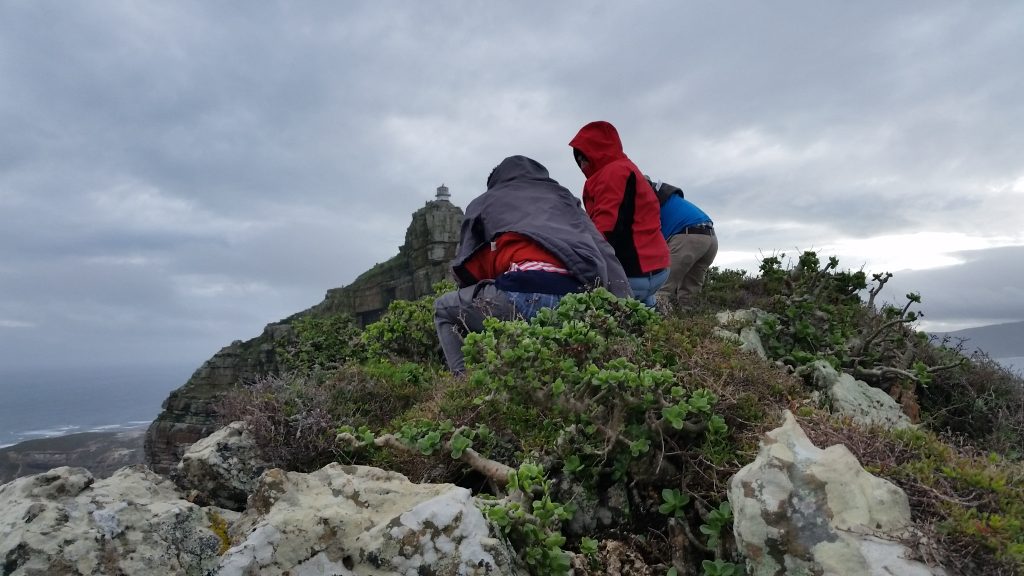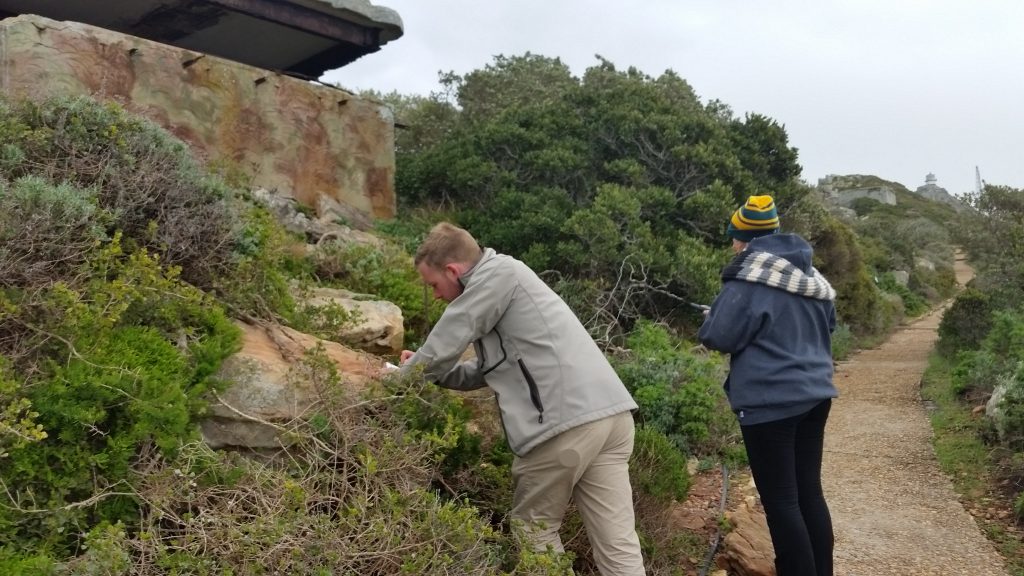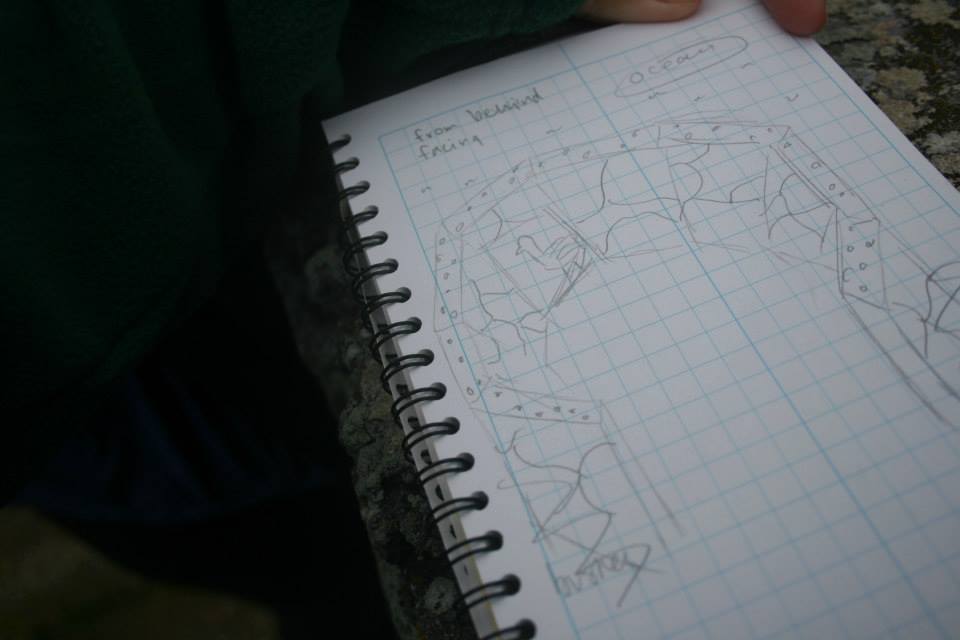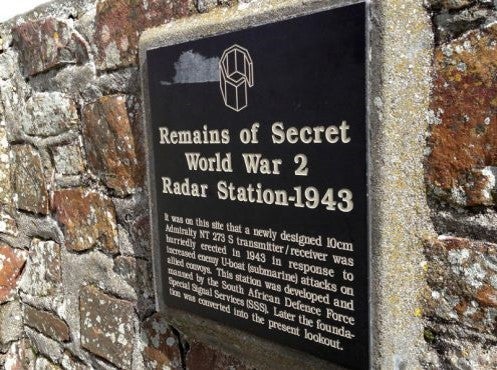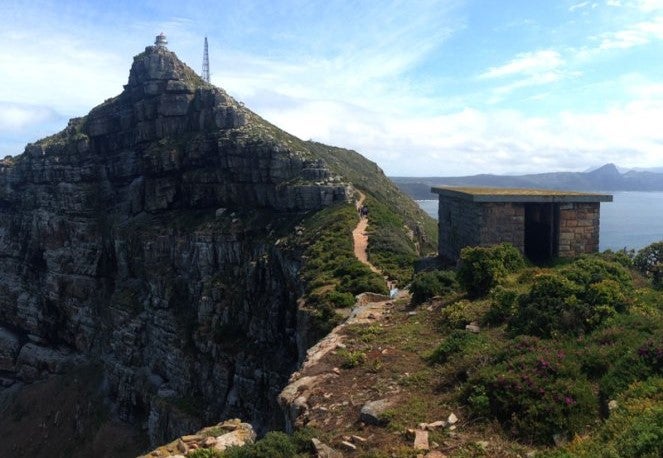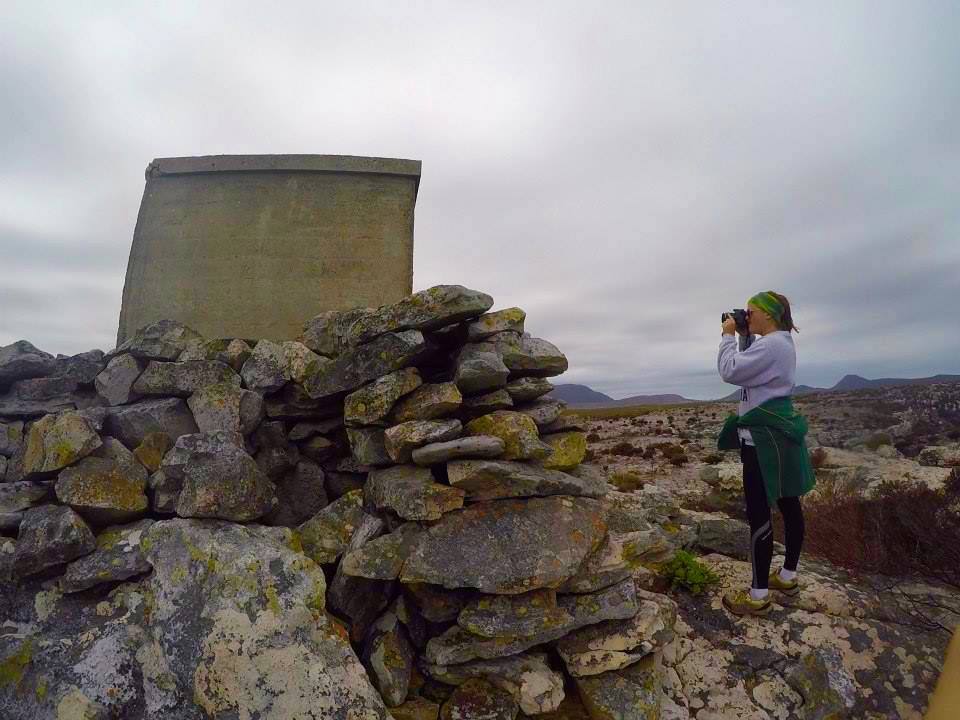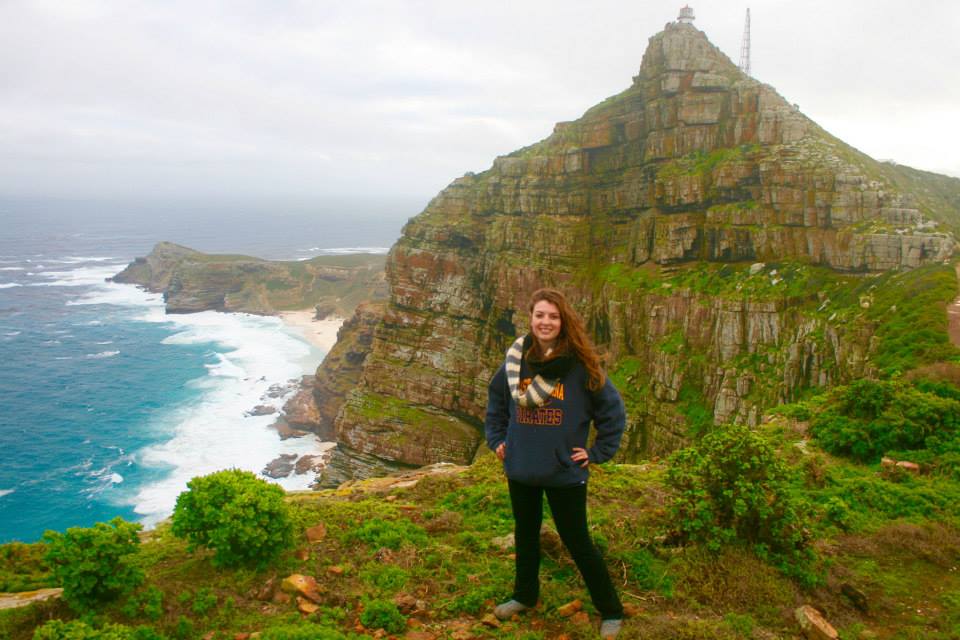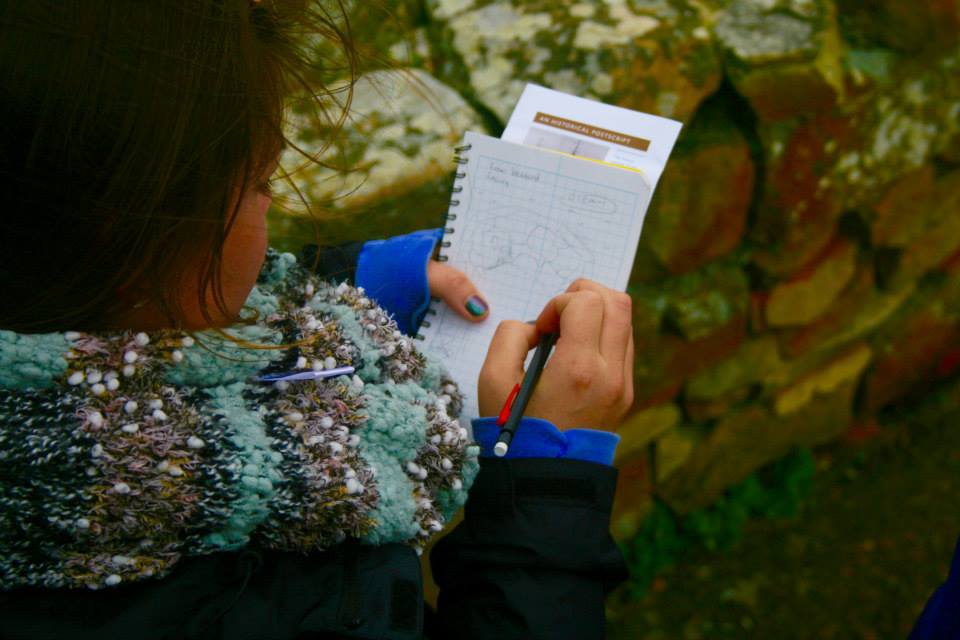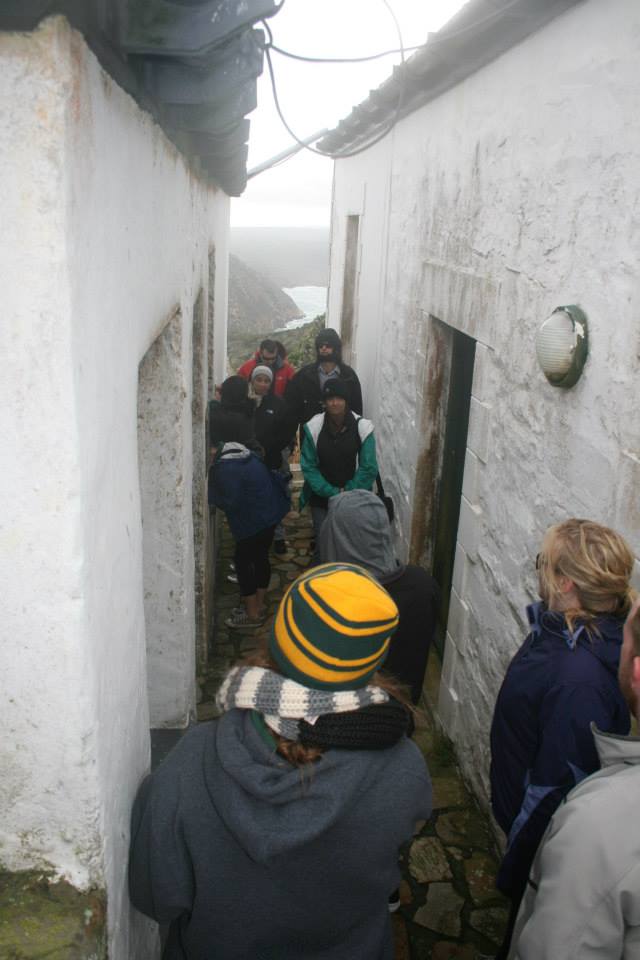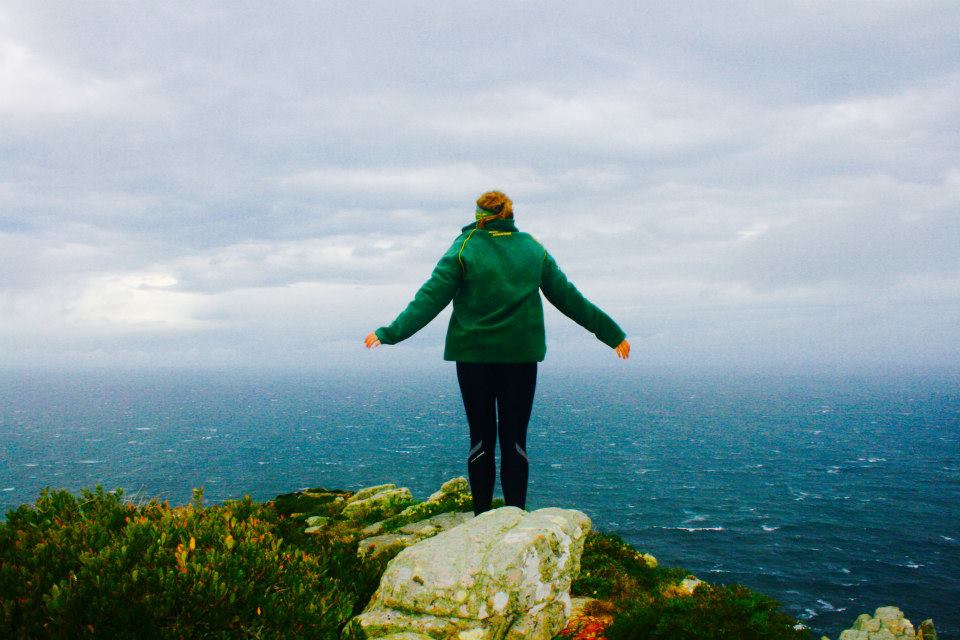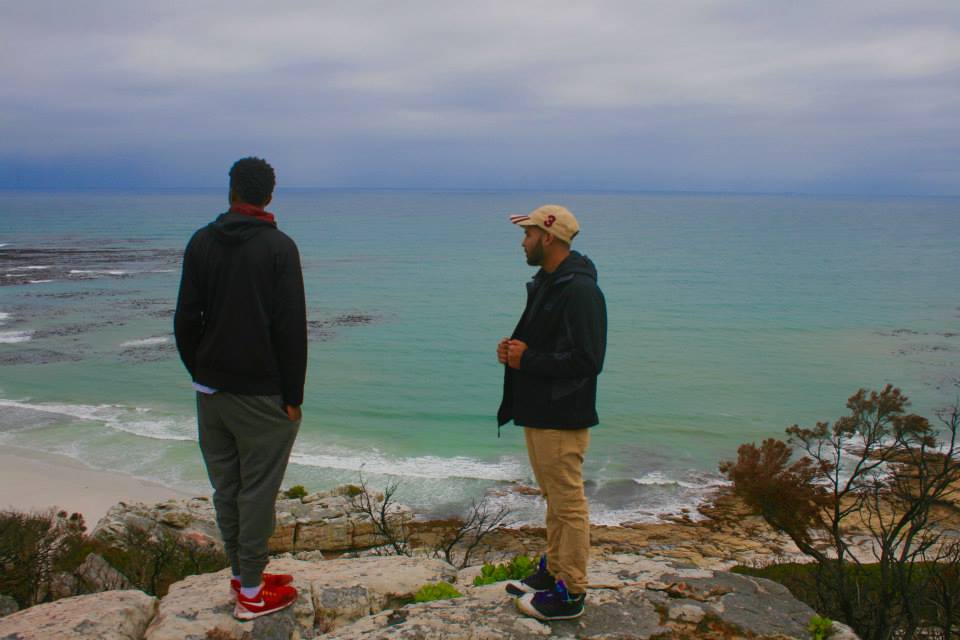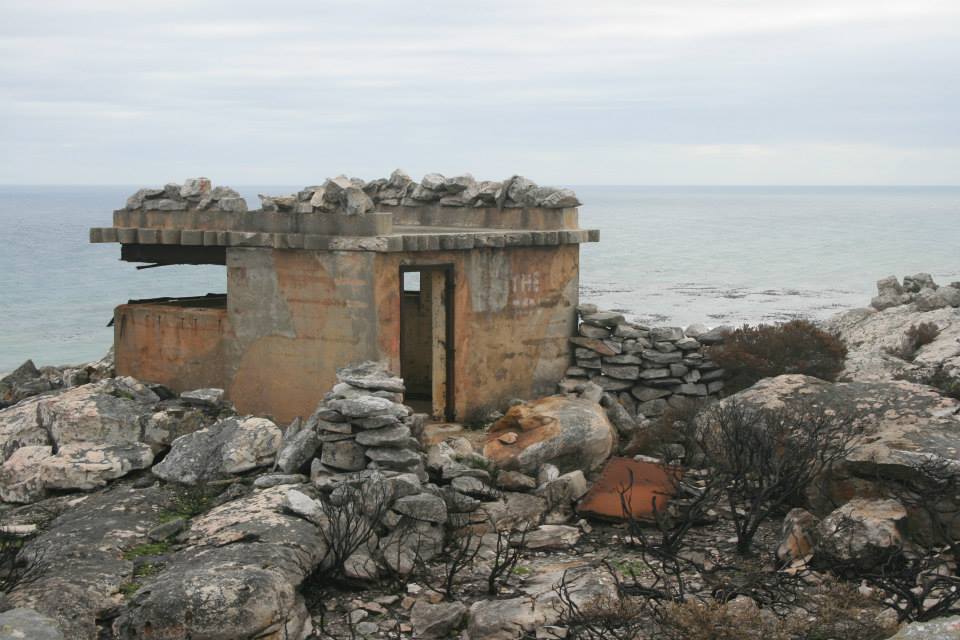In the World War I and II period Cape Point served as strategic observation point with forts, military out posts barracks and secret radar stations dotting the mountain sides employing descendants of groups as a labor force to service the naval infrastructure. Once again, the rocky cliffs and caves of False Bay Mountains served as secure places for undercover operations, this time to conduct surveillance activities of the Bay without the knowledge of Nazi supporters in the Cape Colony. During the wars the Colored community played an important role as labor in the dockyard serving as apprentices and in trades as bricklayers, electricians, fitters and turners, plumbers, and other opportunities not available outside the dock yard.
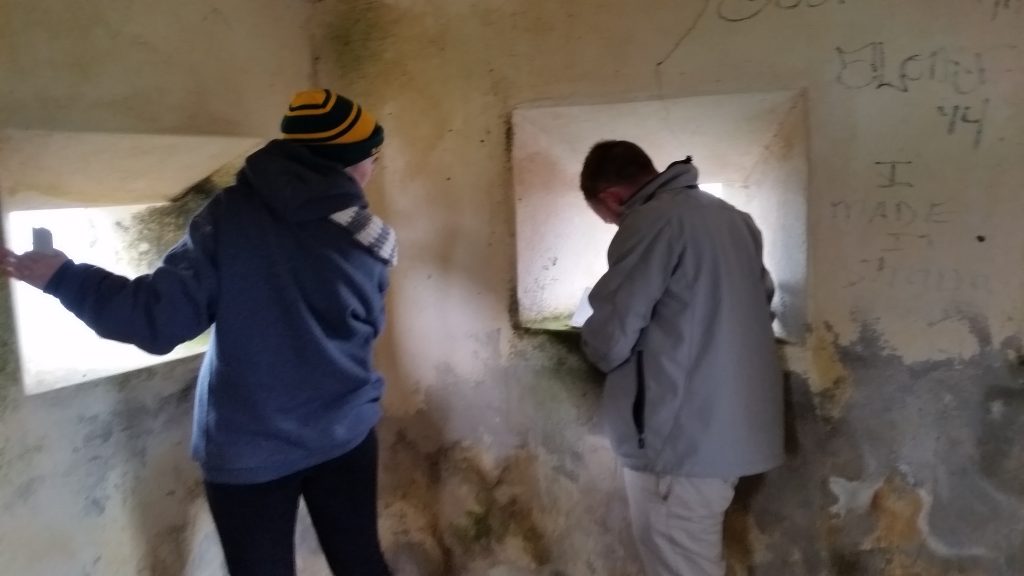
At Cape Point we hiked up the rocky mountain ridge behind our cottage in search for the radar and observation posts used during WWII. On route we encountered a large baboon troop including juveniles. Just off the path we found what seemed to be living quarters for the men and women who worked at these stations. The living quarters consisted of three separate rooms including a fully functional shower room. There were remnants of an out-house/bathroom nearby and facing the ocean was the observation station used to spot all ships approaching the shore. One other structure that was placed up higher on the top of the hill was a simple cube made of reinforced cement, there were no signs as to what this structure was used for but could have been used to collect and supply rain water for the workers to use. The last structure of interest was directly in the center and looked like a wind gauge of some kind. We hope to find historic documents and photographs to supplement our fieldwork.
